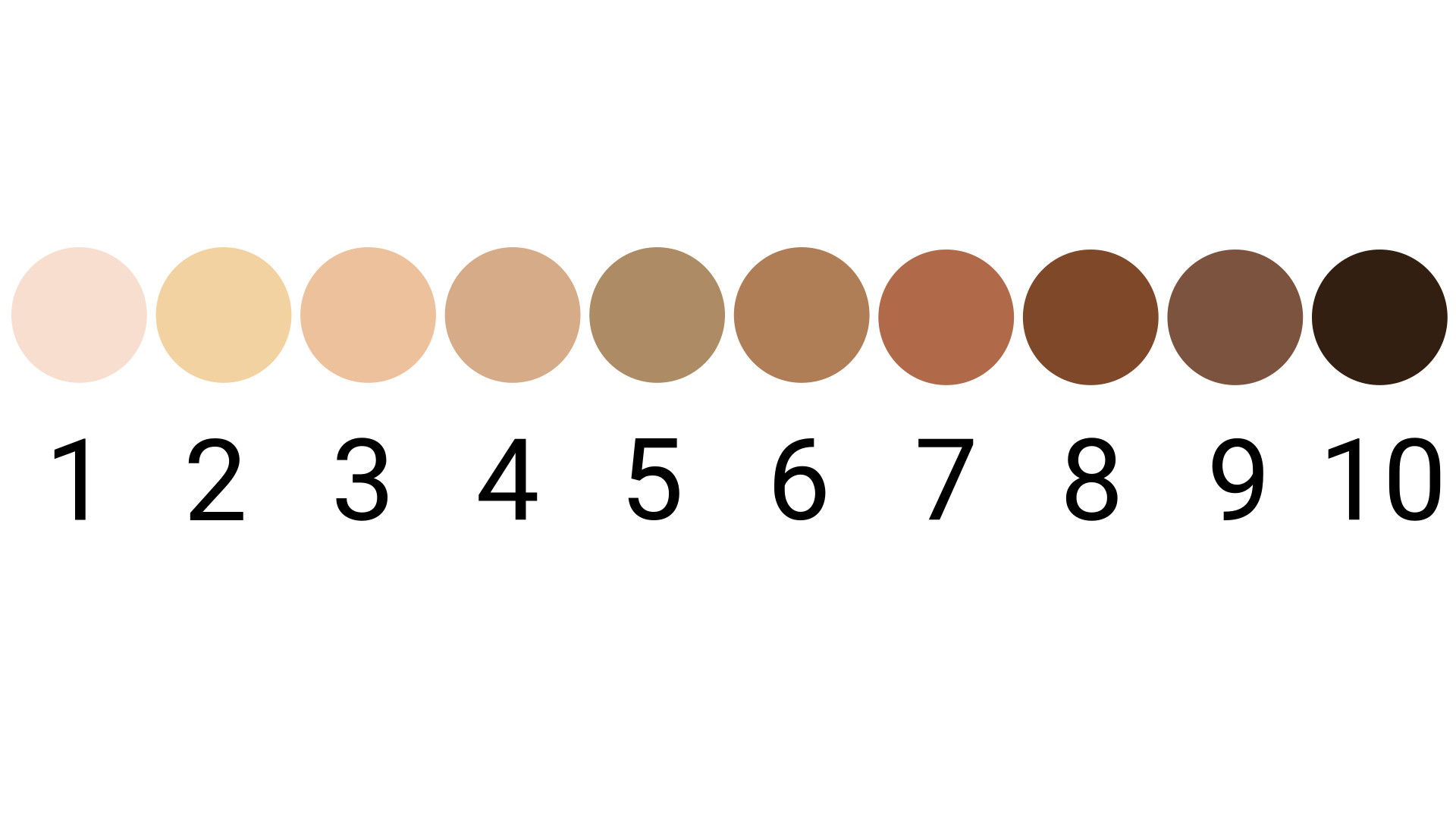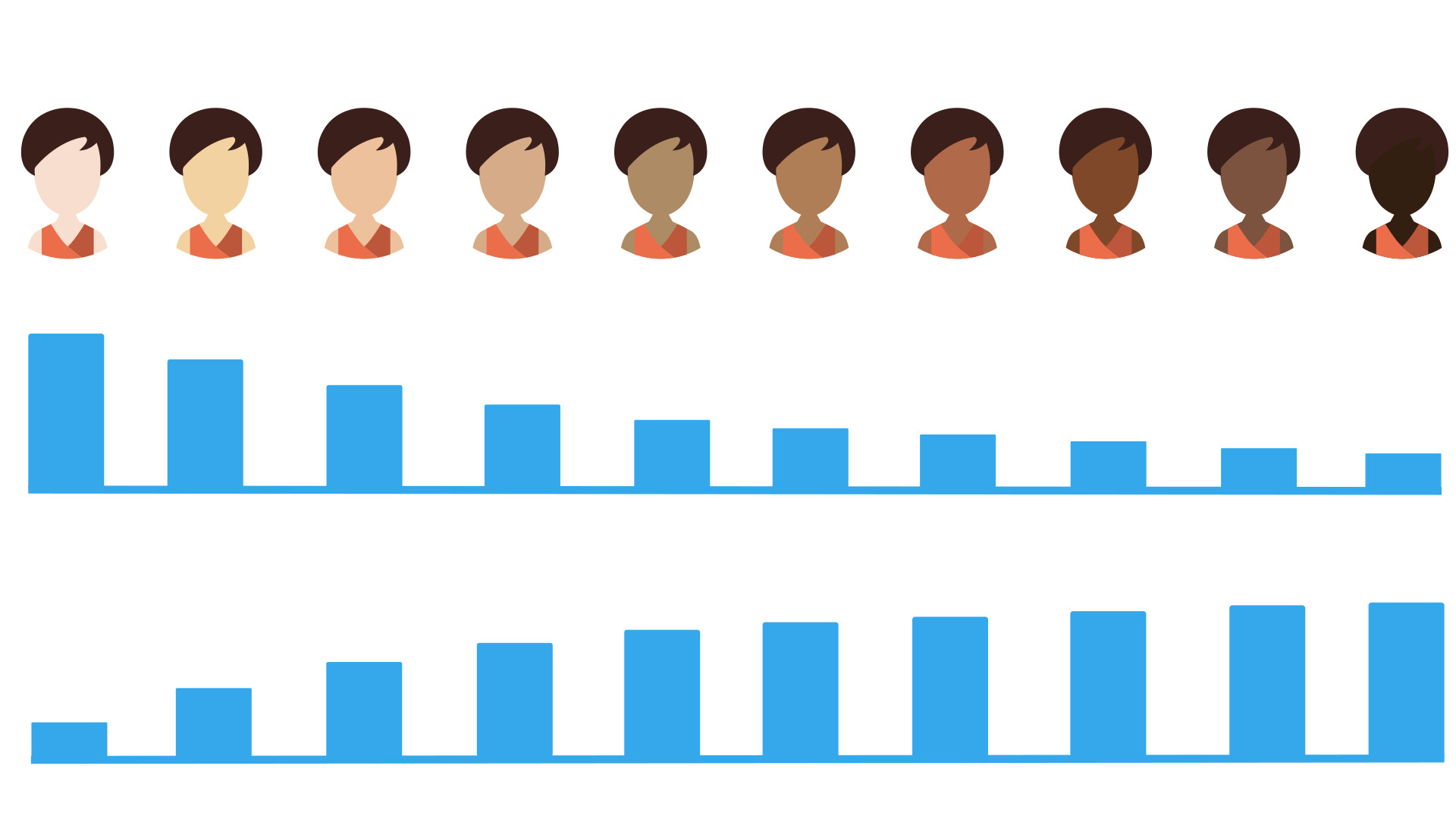
Diversity in Social Networks
Representing all members of a social network appropriately is a major challenge. This article shows concepts and approaches for gender, skin color and culture.
Gender
A social network that makes it its business to digitally map people's social reality faces the challenge of correctly recording and representing the gender of its users. This can lead to a problem if the biological sex and the social gender are to be represented simultaneously. Representing every possible expression of gender in this way is an impossible goal to achieve and must fail simply because not every participant feels that they are represented, given the almost infinite number of possible genders. If this goal is not achieved in this way, the very users who place a special value on it will not be satisfied with the given selection.
The focus on a three-way division male/female/diverse aims purely at the biological classification. Therefore, the implementation does not take place on social constructions, which are, however, an elementary component in a social network. Therefore, a field of tension arises from no indication of gender, to male/female, to the extension to diverse, to the mapping of all possible self-identifications.
One approach is to omit the gender information. The gender is thus formed from the context based on further information, as well as from the social group. Thus, for most people with a binormative world view, it is clear what gender another person is. For all others, the specification of a gender is not important in their context or primarily serves the self-identification in a social group as an identity feature (identity politics).
Skin Colors
Social networks, which were primarily developed in the U.S., have a focus on Western-style ethnic diversity. An entire coverage of ethnic backgrounds, especially from continents that are not focus groups (South America, Asia, Africa) see themselves less represented. To counteract this problem, personas were constructed with skin colors such as blue or green, which no longer allow any identification. Against the goal of diversity, a distance was created for each user. Alternatively, all skin colors can be integrated into one platform. For different skin colors, a scale with 10 distinctions can be used:

With the help of this scale, different distributions of skin color can be generated for random avatars for different countries. This makes it possible to represent one's own person directly within the network. This increases the user's identification with the platform as well as the visualization of the diversity of different ethnic groups within a country.

Culture
The cultural diversity on earth is difficult to realize through a centrally organized company within a social network. Differences in language, idioms and the presentation of explicit content are perceived differently depending on the country or cultural group. The extent of violent and sexual content in particular is assessed differently in different countries. In Europe, for example, the depiction of violence is more taboo than in the USA. The opposite is true of sexualized content, e.g. in films and advertising. Some language is also censored, primarily to protect children and young people. The implementation within a social network is therefore based on the minimum principle in usage guidelines or the definition of standards based on the provider's country of origin. This makes it difficult to implement a worldwide social network that is to be adopted across the board.
One solution approach is to maintain the greatest possible freedom for users along with self-regulation among users. Public groups and persons then follow the minimum principle, private areas follow the usage guidelines. Interfering with seemingly protected areas (e.g., private chat groups) is a serious encroachment on users' freedom.